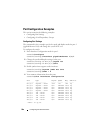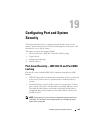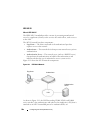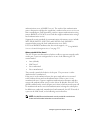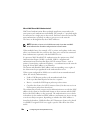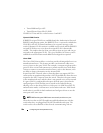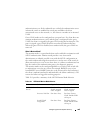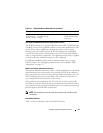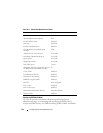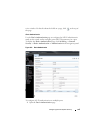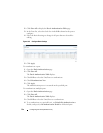
Configuring Port and System Security 507
What is the Role of 802.1X in VLAN Assignment?
Dell Networking series switches allow a port to be placed into a particular
VLAN based on the result of the authentication or type of 802.1X
authentication a client uses when it accesses the switch. The authentication
server can provide information to the switch about which VLAN to assign the
supplicant.
When a host connects to a switch that uses an authentication server to
authenticate, the host authentication can typically have one of three
outcomes:
• The host is authenticated.
• The host attempts to authenticate but fails because it lacks certain
security credentials.
• The host is a guest and does not try to authenticate at all (802.1X unaware).
You can create three separate VLANs on the switch to handle a host
depending on whether the host authenticates, fails the authentication, or is a
guest. The RADIUS server informs the switch of the selected VLAN as part of
the authentication.
Authenticated and Unauthenticated VLANs
Hosts that authenticate normally use a VLAN that includes access to network
resources. Hosts that fail the authentication might be denied access to the
network or placed on a
quarantine
VLAN with limited network access.
Much of the configuration to assign authenticated hosts to a particular VLAN
takes place on the 802.1X authenticator server (for example, a RADIUS
server). If you use an external RADIUS server to manage VLANs, you
configure the server to use Tunnel attributes in Access-Accept messages in
order to inform the switch about the selected VLAN. These attributes are
defined in RFC 2868, and their use for dynamic VLAN is specified in RFC
3580.
The VLAN attributes defined in RFC3580 are as follows:
• Tunnel-Type=VLAN (13)
NOTE: MAB initiates only after the dot1x guest VLAN period times out. If the client
responds to any of the EAPOL identity requests, MAB does not initiate for that
client.




